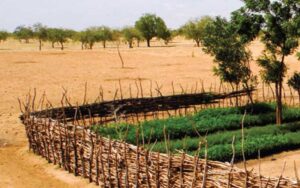Climate Action
Enhancing knowledge, skills and capacity for climate resilience and circularity within communities
Enhancing knowledge, skills and capacity for climate resilience and circularity within communities
Take urgent action to combat climate and its impacts

This program focuses on building capacity in climate-resilient agriculture within communities in North Eastern Kenya. Its primary objective is to improve food security, self-sufficiency and agri-based livelihoods in Northern ASALs by empowering them to overcome climate extremities (droughts, floods, extreme temperatures and water scarcity) through:
Overall, agricultural climate resilience is essential in ensuring food security and livelihoods for farmers, particularly in vulnerable regions.

Greening the North Project (GTNP) is an initiative to rehabilitate degraded habitats in North Eastern Kenya by creating Regenerative Oases through Reforestation, Water Harvesting/Conversation and Sustainable Forest Livelihoods, to mitigate the impacts of climate change and promote community-driven sustainable environmental management.
GTNP touches on five sustainable development goals which are Zero Hunger (SDG1), No Poverty(SDG2), Decent Work and Economic Growth (SDG8), Sustainable Communities (SDG11)and Climate Action (SDG14).
GTNP has two main components that are: